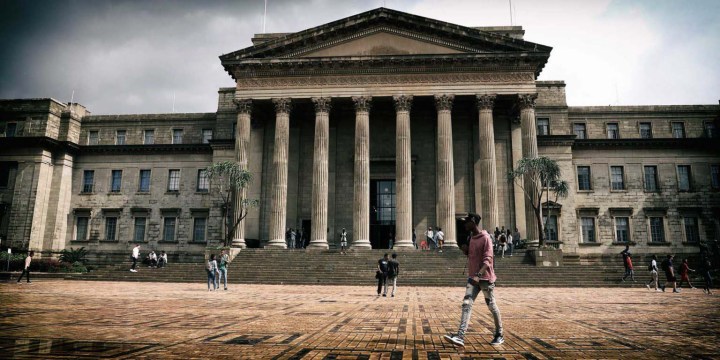2021 ACADEMIC YEAR
Higher education department highlights problems with connectivity as hurdle to learning remotely

The Department of Higher Education – recovering from the recent student protests – has briefed Parliament’s higher education oversight committee on multiple modes of learning and teaching within the higher education system.
It is important that universities “prioritise” students who cannot work remotely because of challenges with connectivity, says Dr Thandi Lewin, the Department of Higher Education, Science and Innovation’s acting chief director: teaching, learning & research.
On Wednesday, the department briefed Parliament’s higher education oversight committee on multiple modes of learning and teaching within the higher education system.
The higher education sector is recovering from protests earlier this year, over issues of access to education during Covid-19, student debt and the 2021 academic year.
Lewin told the committee that the department had assisted all 26 SA public universities with learning, teaching and assessment plans. In addition, the department had, through institutions like the National Student Financial Aid Scheme (NSFAS), provided learning devices such as laptops when higher learning institutions were forced to close in the Covid-19 lockdown.
During the lockdown, remote and blended learning was instituted to help students. Afterwards, a return to campus was done incrementally, through a risk-adjusted approach system. Then, “training for staff and students in the use of alternative teaching and learning strategies”, happened, said Lewin.
Universities had also implemented catch-up programmes to assist students. Measures to assist students included the zero-rating of academic websites, data provision and discounted data bundles for those on NSFAS, and the Funza Lushaka Bursary for those studying teaching degrees.
Lewin said some students were using smartphones to assess learning material. This, “of course, is not ideal”.
During the student protests, the South African Union of Students demanded laptops for students who needed them. The union said the demand for laptops had been met by the department and they would be distributed in a “few weeks”.
The department said that by February, 74% of students who needed laptops had been supported to receive one, including 66% of students on NSFAS.
Lewin said all universities had completed the 2020 academic year and had started the 2021 academic year incrementally.
Speaking about the Technical and Vocational Education and Training (Tvet) sector, Sam Zungu, the general secretary of the South African College Principals Organisation, told the committee that, “students were prioritised but lecturers were not prioritised”.
Zungu recommended that lecturers be provided with devices before students, as “doing this the other way round is problematic and ineffective”.
Zungu said students in the Tvet sector were supported with learning materials and social media groups and that radio and DStv were also used to distribute learning materials.
Currently, 80% of Tvet colleges have implemented multimodal learning in teaching systems, said Zungu.
Within the Tvet sector, blended learning was a “realistic option” in the absence of connectivity, said the department. Alternatively, changing timetables for face-to-face tuition, guided self-study, and social media support made teaching accessible and manageable.
While connectivity remains a challenge for students to access the internet from home, students are able to use Wi-Fi hotspots and learning centres in many colleges to download material and use it later, offsite and offline. All colleges should have this facility, said Zungu.
Attention shifted to the student debt crisis. Lewin said that by 2019 student debt was just over R13.9-billion. In 2018 the figure had been just over R11.8-billion and in 2017, R10.3-billion.
Lewin said universities were still collecting data about student debt from the 2020 academic year, but “if those trends continued, it’s likely those debts grew”.
In March Daily Maverick reported that student debt at the University of the Witwatersrand alone was R1.062-billion.
In closing, committee chairperson Philly Mapulane said “all hands on deck” were needed to complete the 2021 academic year. DM

















 Become an Insider
Become an Insider
Comments - Please login in order to comment.